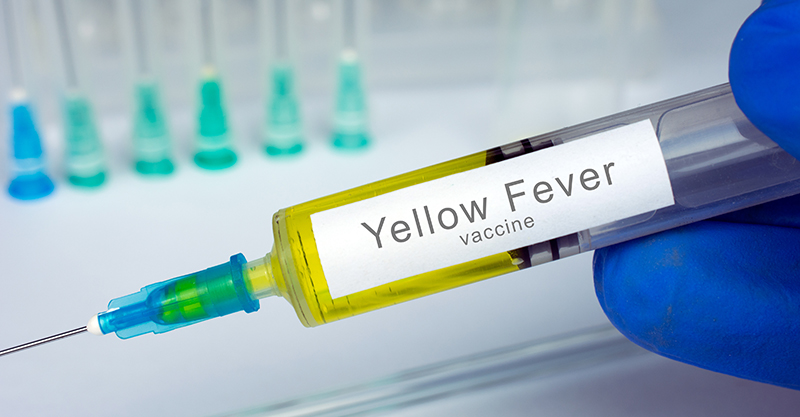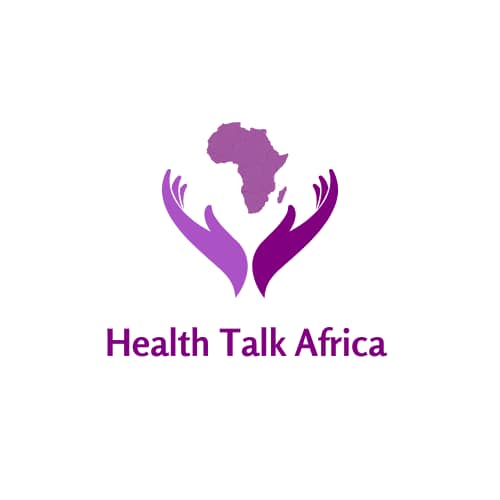Background

Yellow fever is an acute viral hemorrhagic illness caused by the yellow fever virus, an RNA virus that belongs to the family Flaviviridae. The virus is found in tropical and subtropical areas of Africa and Central/South America with the illness being endemic in 34 African countries (including Nigeria) and 13 Central and South American countries. The earliest recorded epidemics occurred in Barbados, Cuba, Guadeloupe and Mexico between 1647 and 1649. There were subsequent outbreaks in North America and Europe between the 17th and 19th century. Yellow fever remains a disease of significant public health importance despite the availability of a safe and efficacious vaccine, with an estimated 200,000 cases and 30,000 deaths annually globally. Large epidemics occur when people infected with the virus introduce it into heavily populated areas with high mosquito density and where most people have little or no immunity from vaccination or prior infection.
The earliest outbreak of yellow fever in Nigeria was reported in Lagos in 1864, with subsequent regular outbreaks reported until 1996. For 21 years, no further confirmed cases were reported until September 2017, following which Nigeria has been responding to successive outbreaks. Yellow fever is an epidemic prone disease for immediate notification on the Integrated Disease Surveillance and Response (IDSR) platform in Nigeria.
Key facts
- Yellow fever is an acute viral haemorrhagic disease transmitted by infected mosquitoes. The “yellow” in the name refers to the jaundice that affects some patients.
- Symptoms of yellow fever include fever, headache, jaundice, muscle pain, nausea, vomiting and fatigue.
- A small proportion of patients who contract the virus develop severe symptoms and approximately half of those die within 7 to 10 days.
- The virus is endemic in tropical areas of Africa and Central and South America.
- Large epidemics of yellow fever occur when infected people introduce the virus into heavily populated areas with high mosquito density and where most people have little or no immunity, due to lack of vaccination. In these conditions, infected mosquitoes of the Aedes aegypti species transmit the virus from person to person.
- Yellow fever is prevented by an extremely effective vaccine, which is safe and affordable. A single dose of yellow fever vaccine is sufficient to grant sustained immunity and life-long protection against yellow fever disease. A booster dose of the vaccine is not needed. The vaccine provides effective immunity within 10 days for 80-100% of people vaccinated, and within 30 days for more than 99% of people vaccinated.
- Good supportive treatment in hospitals improves survival rates. There is currently no specific anti-viral drug for yellow fever.
- The Eliminate Yellow fever Epidemics (EYE) Strategy launched in 2017 is an unprecedented initiative. With more than 50 partners involved, the EYE partnership supports 40 at-risk countries in Africa and the Americas to prevent, detect, and respond to yellow fever suspected cases and outbreaks. The partnership aims at protecting at-risk populations, preventing international spread, and containing outbreaks rapidly. By 2026, it is expected that more than 1 billion people will be protected against the disease.
Signs and symptoms
Once contracted, the yellow fever virus incubates in the body for 3 to 6 days. Many people do not experience symptoms, but when these do occur, the most common are fever, muscle pain with prominent backache, headache, loss of appetite, and nausea or vomiting. In most cases, symptoms disappear after 3 to 4 days.
A small percentage of patients, however, enter a second, more toxic phase within 24 hours of recovering from initial symptoms. High fever returns and several body systems are affected, usually the liver and the kidneys. In this phase people are likely to develop jaundice (yellowing of the skin and eyes, hence the name ‘yellow fever’), dark urine and abdominal pain with vomiting. Bleeding can occur from the mouth, nose, eyes or stomach. Half of the patients who enter the toxic phase die within 7 – 10 days.
Diagnosis
Yellow fever is difficult to diagnose, especially during the early stages. A more severe case can be confused with severe malaria, leptospirosis, viral hepatitis (especially fulminant forms), other haemorrhagic fevers, infection with other flaviviruses (such as dengue haemorrhagic fever), and poisoning.
Polymerase chain reaction (PCR) testing in blood and urine can sometimes detect the virus in early stages of the disease. In later stages, testing to identify antibodies is needed (ELISA and PRNT).
Transmission
The yellow fever virus is transmitted by mosquitoes (both Aedes and Haemogogus species) and has three transmission cycles, namely jungle (sylvatic), intermediate (savannah), and urban. The jungle/sylvatic cycle occurs in tropical rain forests where monkeys, which are the primary reservoir of the virus, are bitten by mosquitoes of the Aedes and Haemogogus species, passing the virus on to other monkeys. Occasionally humans working or travelling in the forest are bitten by infected mosquitoes and develop yellow fever. The intermediate/savannah cycle which is the most common in Africa involves transmission of virus from mosquitoes to humans living or working in jungle border areas. The virus can be transmitted from monkey to human or from human to human via mosquitoes. The urban cycle involves transmission of the virus between humans by urban mosquitoes, primarily Aedesaegypti. The virus is usually brought to the urban setting by a person who has been infected in the jungle or savannah.
Treatment
Good and early supportive treatment in hospitals improves survival rates. There is currently no specific anti-viral drug for yellow fever but specific care to treat dehydration, liver and kidney failure, and fever improves outcomes. Associated bacterial infections can be treated with antibiotics.
Prevention
1. Vaccination

Vaccination is the most important means of preventing yellow fever.
The yellow fever vaccine is safe, affordable and a single dose provides life-long protection against yellow fever disease. A booster dose of yellow fever vaccine is not needed.
Several vaccination strategies are used to prevent yellow fever disease and transmission: routine infant immunization; mass vaccination campaigns designed to increase coverage in countries at risk; and vaccination of travellers going to yellow fever endemic areas.
People who are usually excluded from vaccination include:
- infants aged less than 9 months;
- pregnant women – except during a yellow fever outbreak when the risk of infection is high;
- people with severe allergies to egg protein; and
- people with severe immunodeficiency due to symptomatic HIV/AIDS or other causes, or who have a thymus disorder.
2. Vector control
The risk of yellow fever transmission in urban areas can be reduced by eliminating potential mosquito breeding sites, including by applying larvicides to water storage containers and other places where standing water collects.
Both vector surveillance and control are components of the prevention and control of vector-borne diseases, especially for transmission control in epidemic situations. For yellow fever, vector surveillance targeting Aedes aegypti and other Aedes species will help inform where there is a risk of an urban outbreak.
Personal preventive measures such as clothing minimizing skin exposure and repellents are recommended to avoid mosquito bites. The use of insecticide-treated bed nets is limited by the fact that Aedes mosquitos bite during the daytime.
3. Epidemic preparedness and response
Prompt detection of yellow fever and rapid response through emergency vaccination campaigns are essential for controlling outbreaks.
References
World Health Organization https://www.who.int/news-room/fact-sheets/detail/yellow-fever

Interesting! Thank you for the information.